The Perhentian Islands feel like the real-life version of a generic travel ad for paradise. But beyond lounging on the beach, you can snorkel with small sharks and turtles, and spot monkeys and massive monitor lizards roaming the island.
You don’t even need to dive to be amazed. Just snorkeling around the reefs reveals so much—vibrant coral, curious fish, and even the occasional turtle, clownfish, or small blacktip reef shark. Diving takes you deeper, sure, but snorkeling already gives you a front-row seat to the sea’s spectacular show.
Here’s a story about my encounter with one of those animals on Perhentian Pulau Kecil (the small island).
If you happen to come across one yourself, keep in mind to give it space and move slowly. Apparently, they are not aggressive, but that can change if they feel threatened.
That encounter reminded me that despite the growing number of resorts and tour boats, the islands haven’t lost their edge. Once inhabited by fishermen for centuries and later used as strategic stopping points during British colonial maritime trade, they now cater to tourism. While the paradise beaches attract many travelers, it was the nature that stayed with me — not only the monitor lizards, but the life beneath the sea.
My experience visiting the Perhentian Islands
I visited Perhentian Kecil in the shoulder season in mid-March. The days were mostly sunny, some days with brief showers now and then, but nothing that bothered me—having grown up in Sweden, I’m used to bad weather, so occasional tropical rain felt even nice.
The boat ride here from Kuala Besut Jetty was a bit bumpy. The small boat jumped through the waves as we were being tossed around trying to keep our luggage in place. The ride took about 45 minutes and could be challenging for anyone with a sensitive stomach, so bring motion sickness tablets if needed. The seas are calmer during high season: June, July and August.
Arriving at the simple harbor felt great: the beach was right next to it and my guesthouse was only a couple of minutes walk along the beach. There are no paved roads here, and no cars either.

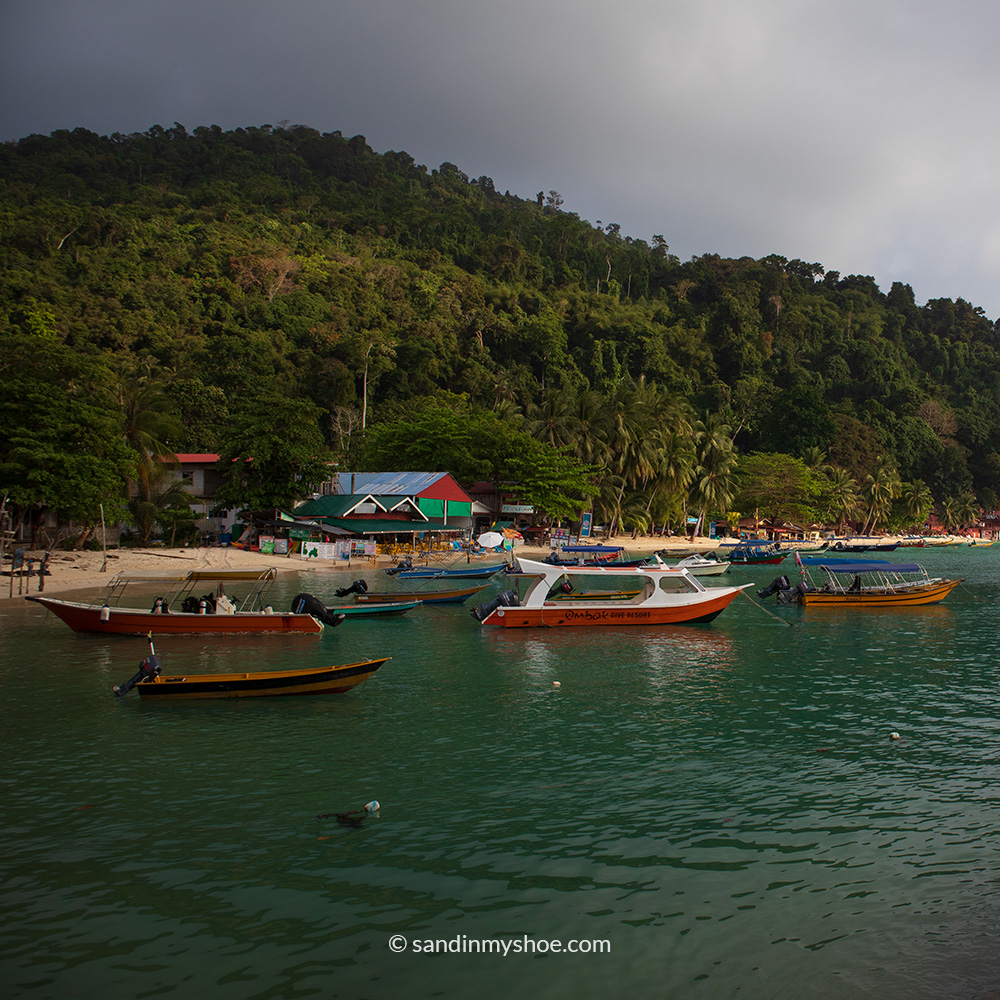
I checked into the guesthouse and went straight for a swim in the warm sea at sunset while birds flew past me—an excellent first impression.
After dinner I quickly discovered mosquito repellent is a necessity. The mosquitoes arrive immediately after sunset in big packs and they know where you are. Remember to bring insect repellent, because the island has only small shops with limited stock, and if they have what you need, prices are much higher than on the mainland.
The next day I walked around the island and found that most restaurants and bars are concentrated along the beaches on both sides, connected by a path that takes roughly 15 minutes to cross. The eastern side of Pulau Kecil is sheltered and very calm—perfect for swimming—while the western side has bigger waves and rougher water, more suitable for surfing.

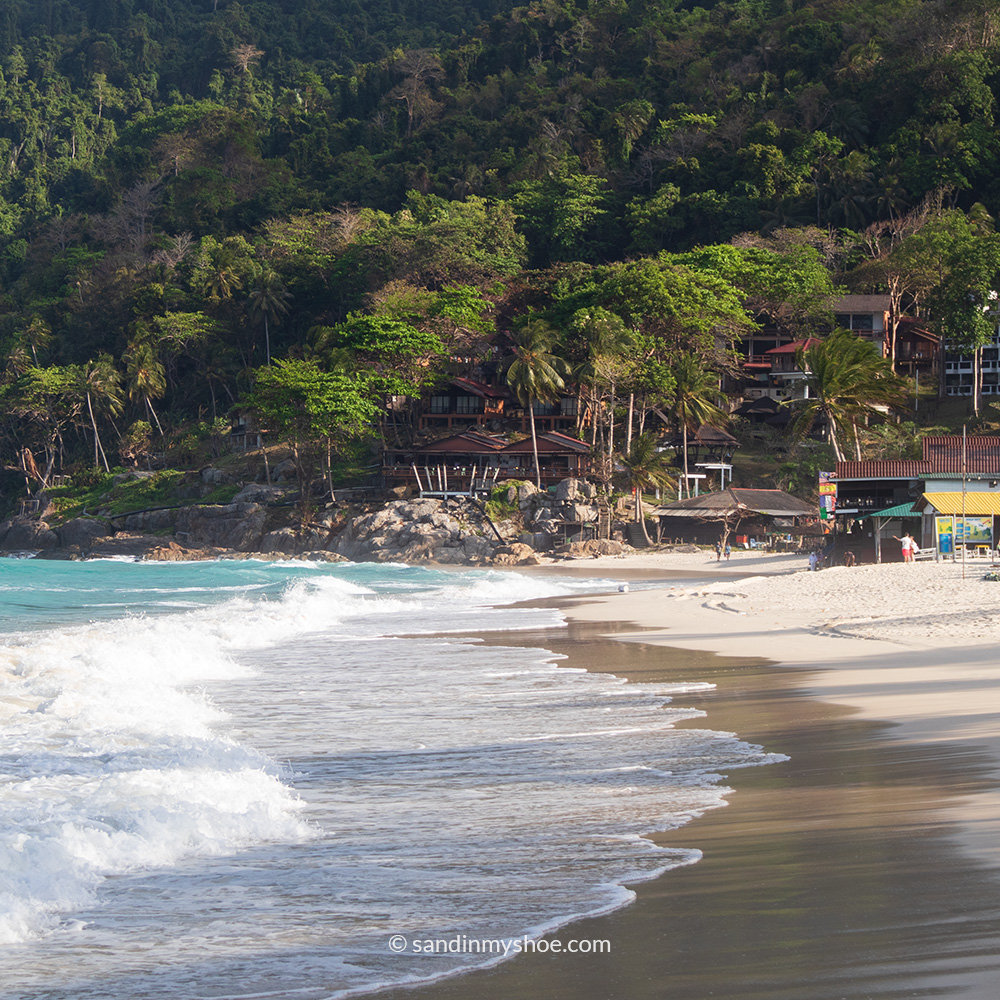
That night I learned that electricity is not always reliable. Many restaurants run on generators and wiring may be inconsistent. But that’s part of the island’s charm: when the power goes out it gets dark, candles come out, food is still cooked on gas, and beer stays cool from the day’s refrigeration. For me, the occasional brownout only added to the atmosphere.


Snorkeling & Scuba Diving in Perhentian Islands
What caught my interest of visiting the Perhentian Islands was the possibility to snorkel with small sharks and turtles. For someone from northern Europe, seeing these animals outside an aquarium felt exotic.
Where you decide to go scuba diving or “just” snorkeling, you won’t be disappointed.
I went snorkeling and spoke with divers; we compared notes and found we had seen many of the same species, although divers can spend longer underwater. The coral gardens are in good condition, both soft and hard corals. Sea life you might spot includes sea turtles, clownfish, cuttlefish, blue‑spotted rays, and black‑tip reef sharks.
I saw turtles, several baby sharks, a clownfish and of course many other small fish.

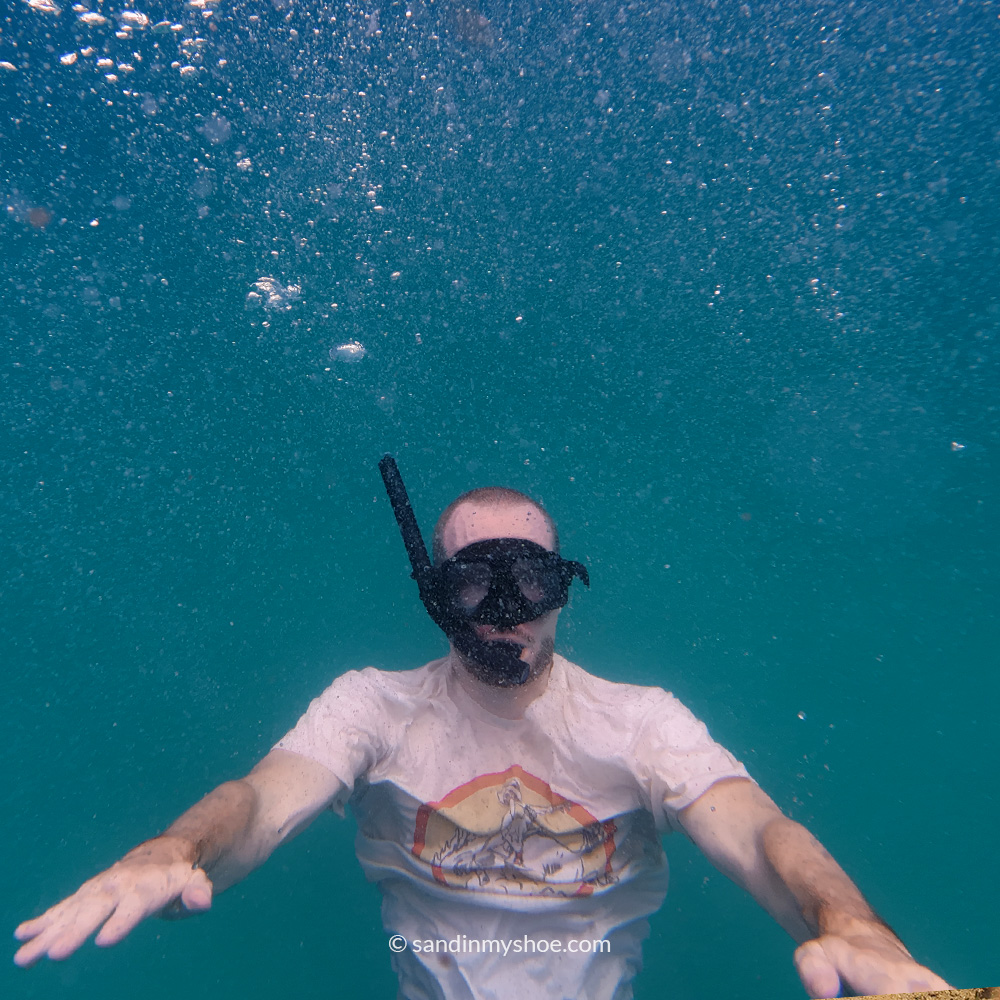
There are many snorkeling tours to choose from. I went on two different snorkeling trips and discovered that the cheapest tour had the best value. For RM40 (≈$9.5) for two hours of snorkeling that included sites with corals, baby sharks and turtles—excellent bang for your buck. However the other tour included secluded beaches and a fishing village.
Practical Tips
Which Perhentian Island is Better?
Do you want to unpack your bags and drink your morning coffee with the views of powdery beaches and sapphire blue waters on a small island or a big island? At first the difference may seem small, but the actual choice is about atmosphere.
Perhentian Pulau Kecil is more lively and budget-friendly, with more hostels, bars and nightlife—ideal for solo travelers and backpackers who want social evenings and easy, affordable options.
Perhentian Pulau Besar is quieter and more relaxed, better suited to couples and families seeking calm beaches and a low-key pace.
Pick Pulau Kecil for social nights and budget travel, Pulau Besar for peace and romance.
Money and Shopping
There are no ATMs on the islands. While some restaurants and bars accept cards, many tour operators and small shops take cash only. Buy essentials on the mainland—sunscreen, bathing gear, snorkel mask (if you want a personal one), insect repellent—because island prices are higher. Bring enough Malaysian ringgit for food, tours, and small purchases.
Accommodation
Prices are more expensive on islands in general all over the world and Malaysia is not an exception. I paid MR150 (≈$35) per night for a room with a fan at Senja Bay Resort. Sea view with my own small porch.
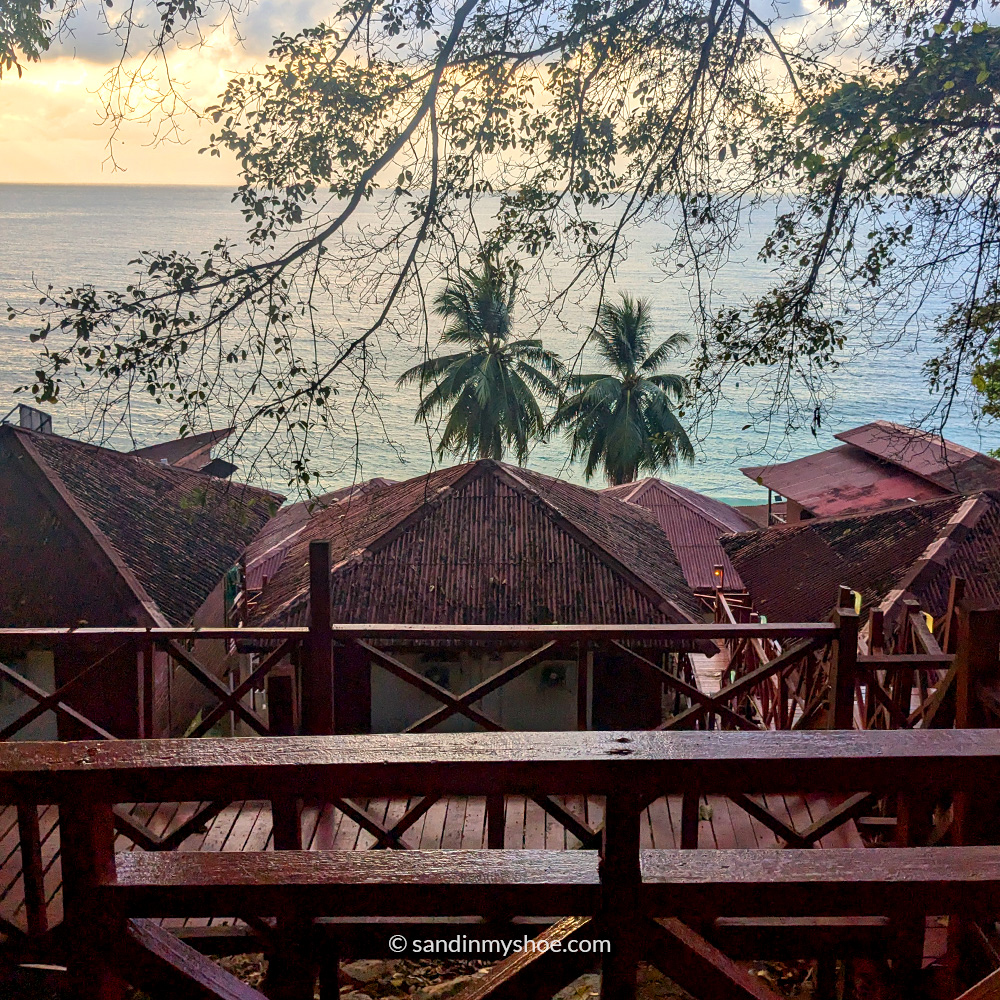
Packing Checklist
Here is a packing list of less obvious items that might get handy during your visit to the Perhentian Islands, in addition to the obvious essentials like clothes, passport, and toiletries:
- Headlamp or flashlight (phone light can be enough)
- Dry bag to keep phone and camera dry
- Mosquito repellent
- T-shirt / Rashguard (the sun will burn your back during snorkeling otherwise)
- Sunscreen
- Reef shoes (reef can be very sharp)
- Motion-sickness tablets
- Power bank (to “survive” brownouts or provide extra when your phone battery drains from extensive photo-taking)
- Enough cash to sustain the whole trip
- Reusable water bottle
- Snorkel mask (although the tour agencies clean the masks, they have probably been used by hundreds of people before you)
Beaches
On Perhentian Kecil you can easily reach both the eastern and western beaches. The eastern beach is sheltered and much calmer, ideal for swimming and families. The western side has bigger waves and is better for surf and rough-water swimming. Walking from the western side to the eastern side takes only 15 minutes.
Besides these main beaches, you’ll need a boat taxi to reach more secluded spots, including a romantic bay on the northern western side; if you’re staying at the Marriott Hotel you can walk there, but there are no shops nearby so bring snacks and drinks.
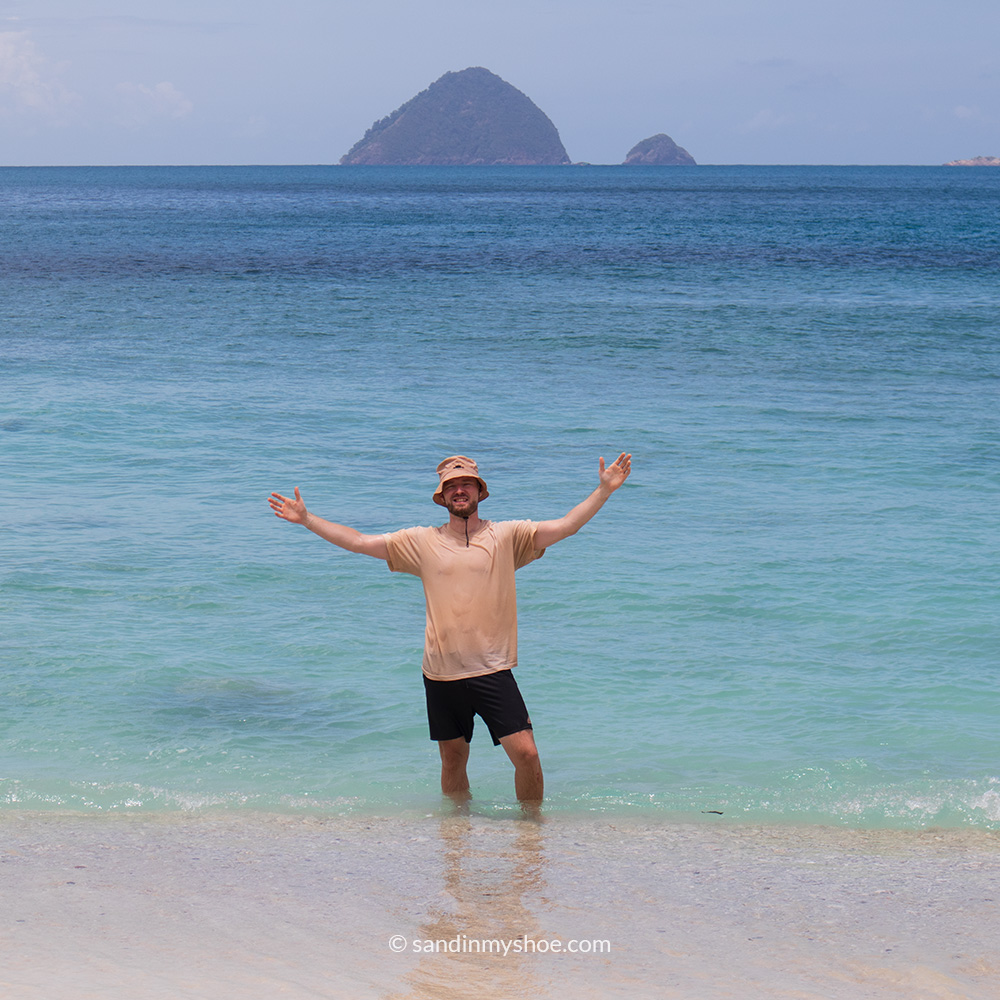
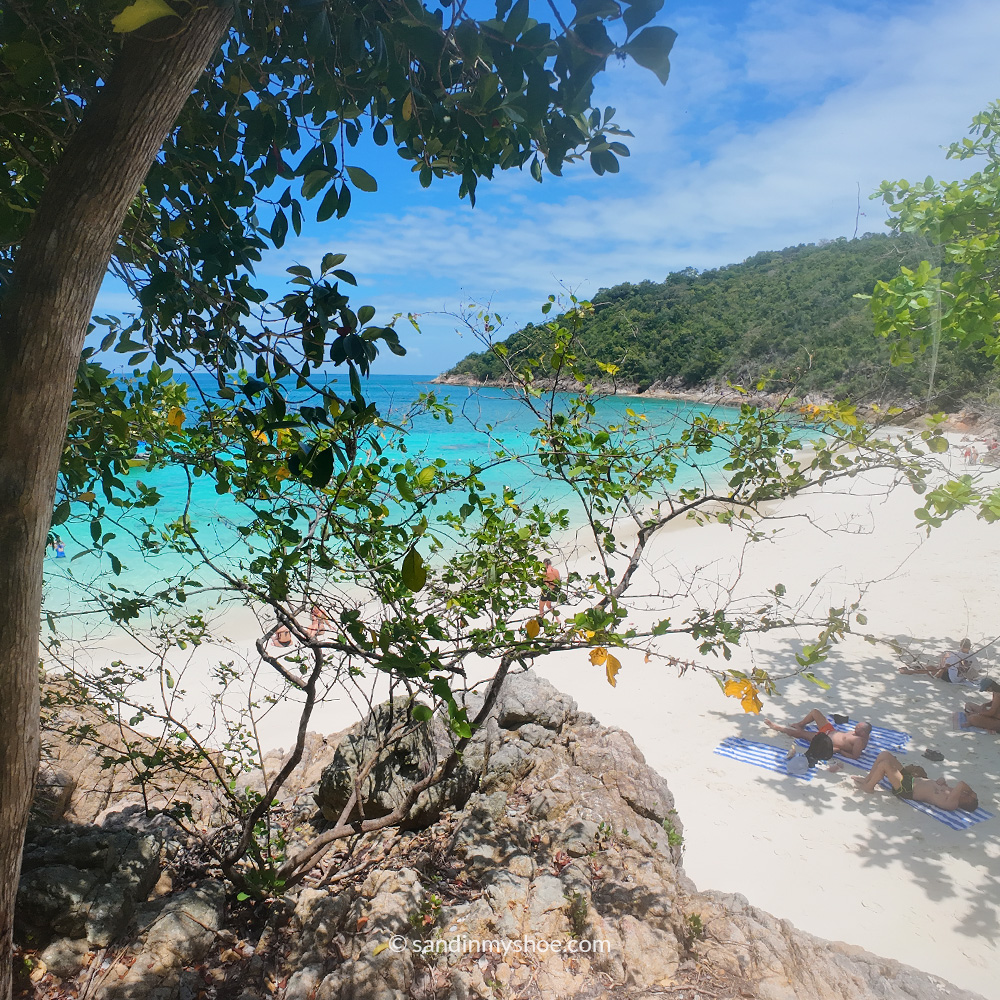
Perhentian Besar, the big island also has many beautiful beaches similar in style and charm.
Snorkeling and Diving
Many operators run similar routes, and snorkeling tours from Pulau Kecil visit many of the same sites as tours from Pulau Besar. Whether you dive or snorkel, you’ll most likely see sea turtles, clownfish, and small reef sharks. Rays are more likely to be seen by divers. Expect group tours to be the best value; bring your own mask if you prefer a personal fit.
How Many Days is Enough
I stayed for 3 nights and it was enough time for me to enjoy the snorkeling and the laidback atmosphere the island had to offer.
When to Visit the Perhentian Islands
The Perhentian Islands’ dry season runs roughly March–October. June, July, and August bring the biggest crowds, so consider the shoulder months—March, April, May, September, and October—for fewer tourists, lower prices, and generally sunny days. I visited in March and the weather was mostly sunny with a few brief showers.
Perhentian Islands
How to Get to the Perhentian Islands
The most common way to travel to the Perhentian Islands is by boat from Kuala Besut Jetty. It takes about 45 minutes, and boats run from morning until mid-afternoon. Check for boat ticket here.
- Coming from further away: The nearest airport is Sultan Ismail Petra (Kota Bharu); from there it’s a 45–75 minute transfer to Kuala Besut Jetty. Booking flights in advance can cost around RM120 (≈$30).
- Overland: From Kuala Lumpur or George Town there are plenty of bus options. Take the earliest bus possible so you can catch the last ferry the same day. From Kuala Lumpur it takes about 8 hours; from Penang about 9 hours. Long‑distance bus tickets cost roughly RM50 (≈$12).
Personally, I took a bus from Taman Negara after finishing the Taman Negara Jungle Trek, which lasted two days with an overnight in a cave. The contrast between hiking through the jungle with leeches to arriving at paradise beaches was refreshing.
Closing reflections
Staying on either island offers great beaches and a similar snorkeling and diving experience since the tour will visit the same places; the real choice is the atmosphere.
- Choose Perhentian Kecil if you want hostels, nightlife, and a backpacker vibe.
- Choose Perhentian Besar for a quieter, more family- or couple-friendly escape.
Both deliver great beaches and marine life—pick the one that matches the trip you want.


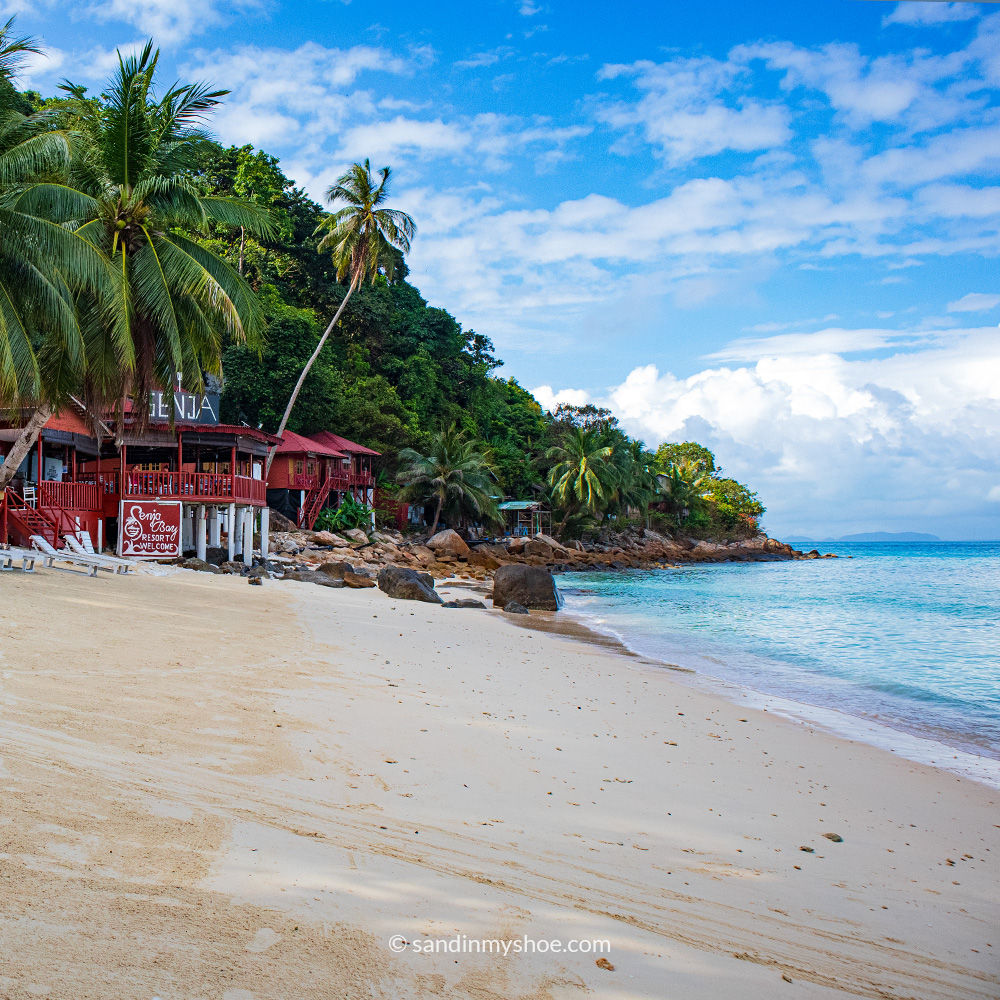





No comments yet, be the first one!
I appreciate hearing from you. If you have any suggestions, questions, or feedback, please leave a comment below. Your input helps ensure the information stays relevant and up to date for everyone.
Thank you for sharing your thoughts!